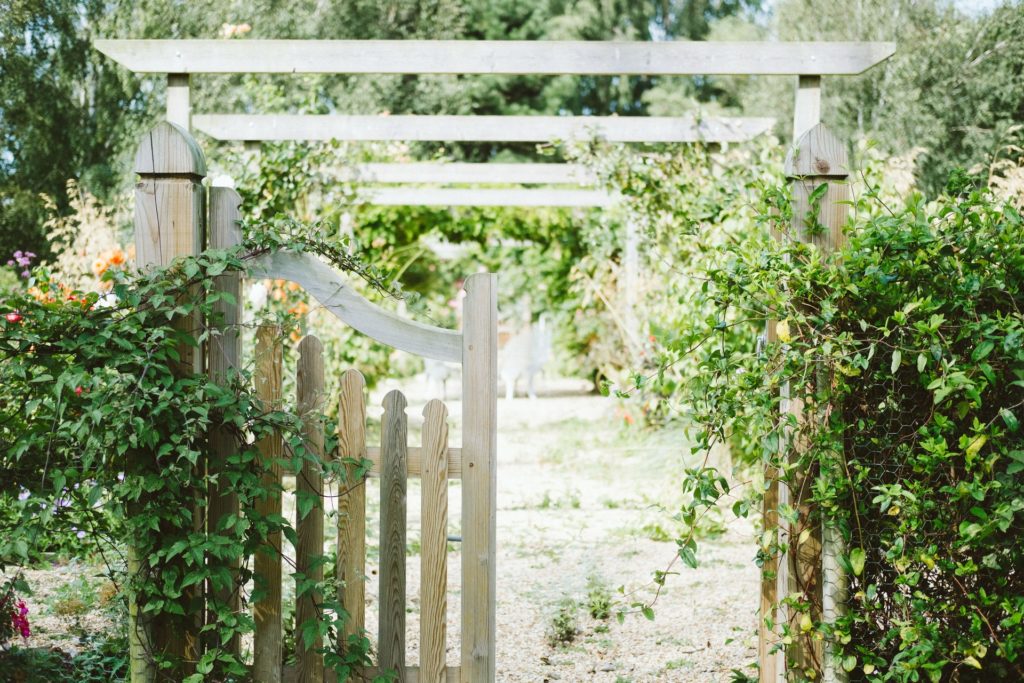Our Inner Landscapes Mirror Our Outer World: Open Your Heart’s Secret Garden to Create More Beauty in the World
A landscape’s horizon is a metaphor for the fluidity and unlimitedness of perception (Benediktsson and Lund 2010). The paradox found in the horizon is its unreachable quality. No matter how much we move forward, it responds to our efforts to get closer by continually remaining out of reach. This phenomenon describes humanity’s existence in the world—the meeting of sky and earth is not attainable and yet we live between them. Life is inevitably a continuation of changing perspectives. Yet, looking out into the horizon is, at the same time, being aware of where we are standing. Therefore, to appreciate our landscapes, our homes, and ourselves, we need to reassess our social psychological behaviours.
This post is an excerpt, with edits, from Chapter 6 of my PhD Dissertation “Nature, Self, and Being in the World.”
Turning our psyches inside-out
To maintain our modern world system, conceptual and behavioural dualisms must be in place.
We create separations between psyche and nature, psyche and society, and society and nature in order to keep the operations of our social, political, and economic systems running. Andy Fisher’s (2013) notion of radical ecopsychology is the call to mend these abstract divisions found within our lives in order to reveal and reintegrate the interconnectedness of psyche, nature, and society. Fisher describes this process of reassessment as “turning the psyche inside-out” (170).
But if turning our psyches inside-out can reveal the ruptures of our social systems, then we can also turn our landscapes outside-in to reveal the disharmony of our collective psyches. Asking questions such as “What is that state of our landscapes?” or “How do our landscapes make us feel?” can help us get some insight towards the well-being of our inner worlds.
Essentially, from the perspective of ecopsychology, our outer landscapes mirror our inner landscapes, that is, the landscapes of our personal and collective psyches. Therefore, landscape architecture, in its archetypal form, can be seen as a parallel to ecopsychology as the process of reintegrating humanity’s interconnectedness with the world. Just as ecopsychology works to mend the divisions in the world system, landscape architecture requires a re-balancing of environmental, social, and aesthetic values.

The importance of beautiful environments
While landscape architecture associations and research participants have expressed the impact of the profession in ameliorating ecological and social landscapes, less has been mentioned on the importance of aesthetics. Although most landscape architects appeal to make places more beautiful than they were previously, they are often met with challenges in promoting beauty as more than decoration.
Because in a survival-based world, which capitalism (and even more so, neoliberalism) needs as a foundation, aesthetics becomes a luxury item that can only be commoditised. However, James Hillman (1996) has argued that aesthetics is both an ethical and a cosmological concern, because:
Ugly environments repress our reactions and repression is exhausting—[…] We deny our aesthetic responses by closing down our senses, our perceptions, and we anesthetize ourselves—with loud music in the ears, with Advil and Xanax, with sleeping pills and caffeine and Prozac, with alcohol with ice cubes before every meal so that we’ve already anesthetized our tongues since we don’t know what we’re eating anymore, and high sugar and high salt.
Consequently, denying our basic need for beauty as a society has been detrimental, especially considering that mental health issues have been increasing all over the world. Therefore, recognition that beautiful environments are integral to our collective well-being is crucial.
Good environmental design helps us flourish
The concept of flourishing can help us rethink how we relate to our environments. One landscape architect I interviewed believed that flourishing is about creating opportunities for discovery. Despite cultural differences and the need for more than one-size-fits-all solutions to landscape design, there are always ways to create situations for people to flourish because there is an abundant of things that individual humans can continue to discover about themselves, about others, and about the world.
Therefore, good landscape architecture, and good environmental design in general, in its broadest sense is about providing opportunities for flourishing. Fortunately, landscape architects already have rich opinions on what good landscape architecture means to them. For example, one landscape architect I interviewed deliberated on numerous benchmarks for good landscape architecture. She questioned,
…has it successfully connected itself to the city? Has it given some element of comfort and nature, and is it accessible to everybody? Can people meet there and feel safe there, either alone or in a group kind of thing? And is there flexibility in it as well? […] Is it stuck in the moment? Is there some flexibility to it in terms of the community that might be changing around it or is it densifying around it? Is this space accommodating that flexibility? Or […] had it been designed as this iconic thing that’s inflexible?
For another landscape architect, good landscape architecture lies in relationship building. She referred to her work as “soft design,” in contrast to the hardscaping that landscape architects do with “hard” materials such as paving and furnishings. The “soft” materials are the people involved in the project and the interactions that come with teamwork. She explained,
If we are all there for our common grounds, we are all humans. We all bring into this conversation certain knowledge, but we are connected together, putting, creating something together. That’s why I’m going more into process design and that’s why I was calling it soft design. The human relationships. If we connect and we all bring everything [together], we have [a] centre. What’s at the centre? What’s the project? What are we all doing together? […] I think the connection in the practice has to come to this. To me, to come back to human beings connecting and acknowledging that we are all part of the same system, and we are creating something that has to be alive.
From these two different perspectives about good landscape architecture, I see three aspects to flourishing in environmental design professions:
- The flourishing of relationships within a team;
- The flourishing of the landscape project created;
- And the potential flourishing of the users of the landscape.
The last aspect anticipates that good designs can inspire reflection, move hearts, awaken spirits, or motivate personal or social change, which are all qualities that can possibly be found in poignant landscape experiences. However, flourishing environments and poignant landscape designs need landscape architects who believe that all these good qualities are possible.

Poignant landscapes are for those who believe
However, the answers to a survey question I asked on whether the profession of landscape architecture is succeeding in making poignant landscapes were rather ambivalent. The average rating from survey respondents was 5.2 out of 10 and comments in response to the question tended to be of resignation.
First, respondents had the belief that poignant landscapes are more “natural” than what designed landscapes are, and therefore:
- “Everyday landscapes are not poignant.”
- “I prefer to make useful places in urban environments.”
- “I don’t see us doing much of anything [that could be poignant] at that scale.”
- “Not much of our work falls into that category. Maybe try a different term?”
Second, respondents had the belief that budget constraints and regulations stifle the creation of meaningful and poignant landscapes:
- “Much of the design out there is utilitarian, budget-strapped, and uninspired because the mandate for the work is not to inspire, but to fulfill basic functional needs.”
- “There are so many barriers to creating meaningful space, that sometimes I think that it’s sheer accident when one actually works out.”
- “Only large projects have the budget and space to be poignant.”
- “The opportunity to provoke and create poignancy is rarely welcomed.”
- “Only rarely is the profession engaged by community groups to help design other assets.”
There were a couple of more optimistic comments—those who saw the efforts of landscape architects so far and the room for improvement. Still, for the most part, survey participants had envisioned a status quo of landscape architecture that did not include poignant landscapes in their work. Poignant landscapes did not belong in their horizon of thought.
However, one respondent summed up the idea of poignant landscape architecture as an expanding horizon exercise. They wrote, “[landscape architects] are not doing it because they have not recognized it as a goal.”
On the other hand, most of the landscape architects I interviewed personally, saw poignant landscape architecture as an inherent goal for the profession. They believed that poignant landscapes was integral to the pursuit of good landscape architecture because they interpreted poignancy in their own ways. And through their stories, I am also reminded that poignancy can be found in different parts of the designer-landscape-user dynamic.
Start with tending the garden in your own heart
One research participant shared a story of how poignant landscape architecture also means being moved by her role as a landscape architect in affecting other people’s lives.
Four years after her work on restoring the pastoral cascades at the Halifax Public Gardens after Hurricane Juan, she returned to the gardens and noticed an elderly woman in tears beside her on a bench. When she asked the woman what was wrong, the elderly woman said, “I’m perfectly happy. You see that bridge up there? I was married on that bridge in 1928, and it hasn’t looked as beautiful as it did then till now.”
The landscape architect amusingly thought to herself at that moment, “I’m done! I fixed the bridge. She loves it. I can retire!”
The encounter was especially moving for her because it reminded her of how her work could reach people. From the lesson from this encounter, she reflected on the meaning of poignant:
Poignant, I think is something that tugs at your heart. Because of that, you can’t define it as this or that or something else. It’s something that speaks to you. Like that lady crying on the park bench. For me, it was just a lovely vista. For her it was poignant. […] We’re responsible for so many different things [as landscape architects], and I think we’re responsible that natural communities will flourish and that human society flourishes. Without immersing ourselves in the emotions of others, without reaching out empathetically, whatever we build, we can build anywhere. What makes it special is how the people who live in it, who work in it, who interact with it, feel about it.
The use of poignant landscapes for my research implies a perspective that poignant landscape architecture is indeed possible. But because poignancy is interpretative, poignant landscape architecture has no design formula.
Nevertheless, one characteristic of poignant landscape architecture is certain. Poignant experiences are humbling experiences, as I have witnessed from the examples shared by my research participants. Therefore, poignant landscape architecture, if achieved, would also be a humbling practice.
But despite all this discussion about physical landscapes, I know that the physical world is not what prompts one to see a landscape as poignant.
My own life experiences tell me that poignant landscapes come from the inside-out. Just like how we can turn our psyches inside-out to reveal the ruptures of society, and turn our landscapes outside-in to reveal the disharmony of our collective psyches, our relationship with what is poignant can reveal how we see ourselves in relation to the world.
If I were to list my own top 3 poignant landscape experiences, I’d find only fictional landscapes. The first two landscapes are images: Canadian luminist painter Lucius O’Brien’s Sunrise on the Saguenay, Cape Trinity (1880), as mentioned in this blog post about the sublime, and an image of beach house I saw in high school. The third is the children’s novel: Frances Hodgson Burnett’s The Secret Garden.

The Secret Garden is alluring because it tells of children healing from their experiences in landscapes. But what is particularly special to me about the book is that it reminds me of the metaphor that a secret garden resides in a person’s heart. This metaphor prompts some important self-reflection questions:
- How beautiful is your garden blooming?
- Have you buried the keys and neglected the garden due to fear and heartbreak?
- Or have you tended it gently?
- What if you could open the garden to others and share the beauty?
- Or help another person nurture their own garden?
If it’s possible for our secret gardens to be nurtured and shared, then the role of poignant landscapes in landscape architecture or environmental design is not fantasy nor indulgence. This process supports the flourishing of our secret (inner) and public (outer) gardens, both metaphorically and physically. But only we can, as individuals, choose the paradigm that allows for this flourishing.
References:
- Benediktsson, Karl, and Katrín Anna Lund. 2010. ‘Introduction: Starting a Conversation with Landscape’. In Conversations with Landscape, edited by Karl Benediktsson and Katrín Anna Lund, 1–12. Farnham, Surrey: Ashgate.
- Fisher, Andy. 2013. ‘Ecopsychology at the Crossroads: Contesting the Nature of a Field’. Ecopsychology 5 (3): 167–76.
- Hillman, James. 1992. ‘Anima Mundi: The Return of the Soul of the World’. In The Thought of the Heart and the Soul of the World. Dallas: Spring Publications.